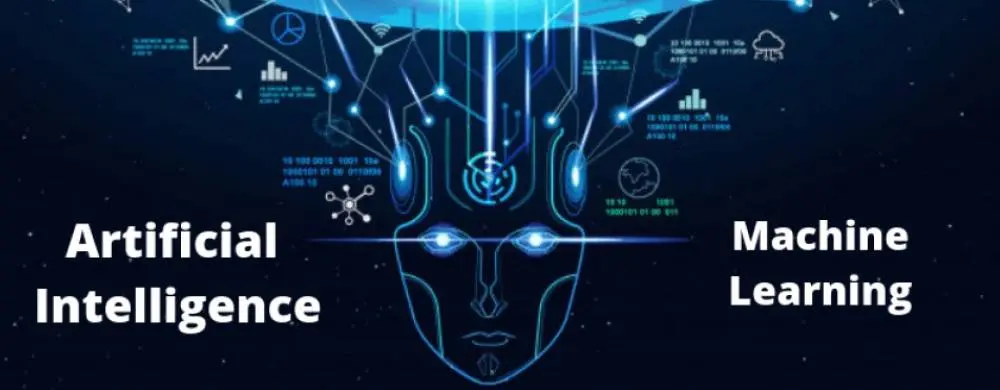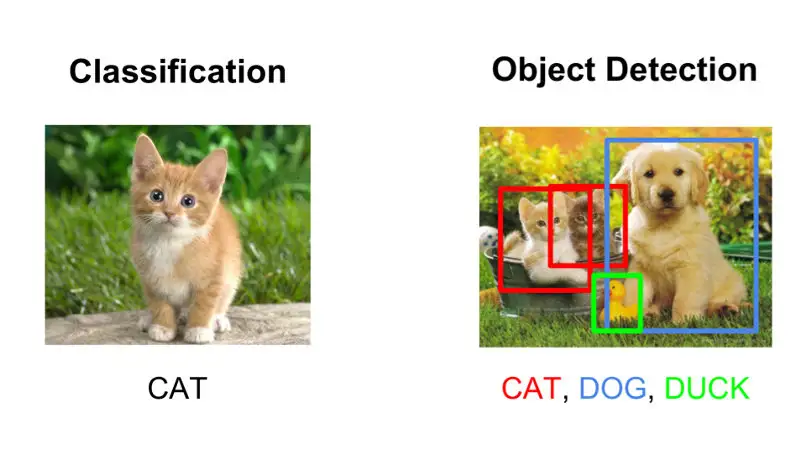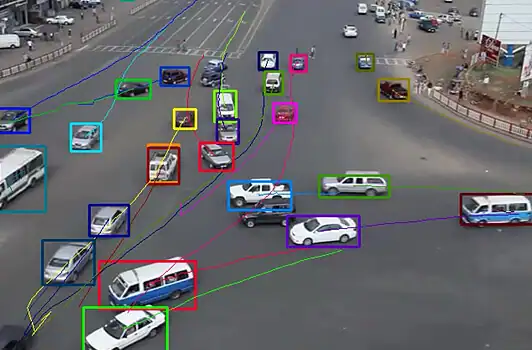Top AI and machine learning techniques used by the computer vision team

A branch of machine learning called computer vision makes it possible for computers to comprehend complex information from films and digital images. Machine learning and computer vision differentiate from each other. Before getting into techniques, we first have to understand AI and machine learning, and computer vision and how some areas are utilized efficiently by inculcating both technologies in building amazing applications. In this blog, we have discussed in brief both technologies.
Let's first understand machine learning and computer vision.
Table of Contents
- Machine Learning
- Computer Vision
- How AI and Machine Learning Techniques are Used by Computer Vision?
Machine learning
The creation of algorithms and similar technologies that can learn behavioral patterns for a given environment through guidance and training sets is known as machine learning (ML).
Machine learning, a subcategory of artificial intelligence, primarily avoids some of the biggest and most philosophical AI issues in favor of learning and training strategies that can produce efficient computers for any given environment. The focus of this field is on mathematical analyses, algorithms, and machine learning methods that can be used to build machines for a variety of markets, including manufacturing, retail, distribution network management, food production, and infrastructure.
Several ML paradigms place a strong emphasis on teaching algorithms to spot data patterns in order to guide strategic decisions in comparable situations. The following are some of these strategies:
Supervised learning: Data scientists give ML systems training data sets along with a list of inputs and associated expected outputs when using supervised learning models. With this method, the system for machine learning can comprehend the desired outcomes of a series of activities and develop tactics that will best achieve those outcomes.
Unsupervised Learning: Unsupervised learning methods utilize unstructured sets of data without connected, ideal outputs, as is clear from the name. The machine-learning system will have to analyze data patterns to create behavior strategies.
Reinforcement Learning: This uses models of cumulative rewards to teach agents how to behave in various systems. It is often used to train independent computer agents in a given system. Although there are many industries where this sort of ML is employed, online multiplayer games have sparked a substantial amount of study in this field.
Deep learning & neural networks: Prior to these technologies, machine learning and artificial intelligence (AI) systems relied on linear or iterative methods. Researchers created "neural network" brains starting in the 1980s by using node-cluster architectures and weighted decision-making techniques. The results of the simpler issues might then be combined to provide a more complete solution for the larger difficulties. In this approach, machine learning algorithms may deconstruct complex issues into simpler ones.
Computer Vision
The process of employing computers to comprehend digital photos and movies is known as computer vision. It aims to automate operations that human eyesight can carry out. In order to produce information, involves gathering, processing, analyzing, and comprehending digital images and extracting data from the actual world. It also features sub-domains including object identification, video tracking, & motion detection, making it useful for navigation, object modeling, and other fields.
Several examples of well-known computer vision tasks are provided below:
Image Classification: A dog, an apple, or a person's face are examples of images that can be classified using image classification. More specifically, it can correctly guess which class image information belongs to. A social network corporation would want to utilize it, for instance, to automatically recognize and sort out offensive photographs shared by users.
Object recognition: In order to recognize a separate class of image and thereafter recognize and tabulate its occurrence in a video or an image, object detection can employ image classification. Detecting damage in an assembly process or locating equipment that needs maintenance are a couple of examples.

Tracking of objects: After an object is found, it is followed or tracked. This operation is frequently carried out using real-time video streams or a series of sequentially taken pictures. For instance, autonomous vehicles must track moving things like pedestrians, other vehicles, and road infrastructure in addition to classifying and detecting them in order to avoid crashes and follow traffic regulations.

Typically, computer vision employs two distinct technologies:
Deep Learning: As was already established, deep learning can aid in the solution of complex problems. What's more, deep learning with neural networks can simply teach computer "brains" to take in visual input and remember patterns, tactics, and alterations to environmental factors over time. See more
Convolutional Neural Networks (CNNs): They use "convolutions" (the process of constructing a mathematical algorithm from two other factors) to generate predictions about the data by breaking down visual information, such as images, into pixels.
Computer vision and machine learning are frequently combined to efficiently collect, process, and interpret collected visual data. Here are a few uses for these technologies.
How AI and Machine learning techniques are used by computer vision?
Tracking videos: A moving item can be tracked using video technology over time. Video tracking is aided by object identification. Sports can use video tracking. These technologies are perfect for tracking the activity of athletes because sports entail a lot of movement.
Autonomous vehicles: Computer vision is a component of autonomous vehicles like self-driving cars. The automobile has cameras that offer a 360-degree field of view and a 250-meter range. The cameras help with lane locating, estimating road curvature, detecting obstacles, detecting traffic signs, and many other tasks. Object identification and classification must be implemented using computer vision.
Sports - computer vision is employed in sports to enhance decision-making, analysis and interpretation, athlete training, and broadcasting. In sports biomechanics, players and sports are studied and analyzed quantitatively. Virtual markings can be placed all over the court or field to enhance the broadcast. In order to collect the data needed for basketball analytics, computer vision is used. By following the player's movement, these metrics are collected utilizing tracking of videos and object recognition. Techniques for motion analysis are also applied to aid in motion tracking. The data is analyzed using a convolution neural network and deep learning.
It is clearly visible that AI and machine learning techniques and algorithms are being utilized for the implication in Computer Vision. However, with deep learning, Computer vision is expanding its capabilities to object detection, image classification, image segmentation, etc., and sectors like Healthcare, Finance, and retail are utilizing computer vision with the involvement of AI and Machine learning techniques.
Here, at Labellerr, we believe that innovation and technology will help us develop in the future. Our committed team of computer vision and machine learning specialists provides ongoing assistance to develop the technologies and systems you require to improve your business.
To know more about such information, keep visiting our website!

Simplify Your Data Annotation Workflow With Proven Strategies
.png)


